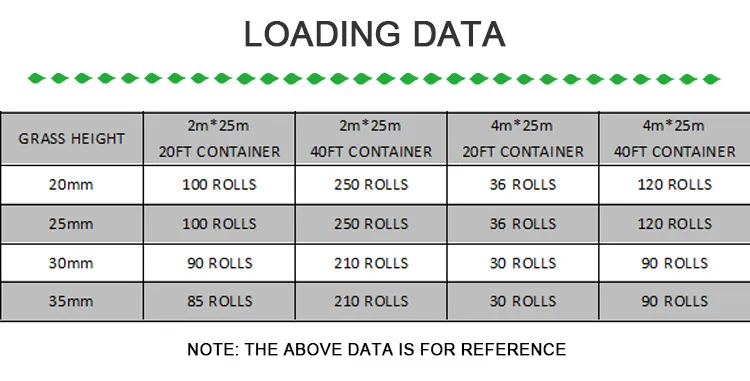
- Afrikaans
- Arabic
- Belarusian
- Bengali
- Czech
- Danish
- Dutch
- English
- Esperanto
- Estonian
- Finnish
- French
- German
- Greek
- Hindi
- Hungarian
- Icelandic
- Indonesian
- irish
- Italian
- Japanese
- kazakh
- Rwandese
- Korean
- Kyrgyz
- Lao
- Latin
- Latvian
- Malay
- Mongolian
- Myanmar
- Norwegian
- Persian
- Polish
- Portuguese
- Romanian
- Russian
- Serbian
- Spanish
- Swedish
- Tagalog
- Tajik
- Thai
- Turkish
- Turkmen
- Ukrainian
- Urdu
- Uighur
- Uzbek
- Vietnamese
cost of artificial grass football field
Dec . 30, 2024 04:34 Back to list
The Cost of Artificial Grass Football Fields An In-Depth Analysis
In recent years, the popularity of artificial grass football fields has surged, driven by advancements in technology and an increased appreciation for durability and low maintenance costs. However, the financial implications of installing, maintaining, and upgrading artificial grass fields are complex and warrant careful consideration for any organization or municipality contemplating such an investment.
Initial Installation Costs
The first and perhaps most significant factor to consider when evaluating the cost of artificial grass fields is the initial installation expense. The price of synthetic turf can vary significantly based on the quality of the materials, the type of infill used, and the specific design of the field. Generally, the cost of installing an artificial grass football field ranges between $600,000 to $1,200,000. High-end fields featuring advanced technology or additional features, such as integrated drainage systems or specialized infills, can even exceed these estimates.
To break down these figures further, the primary components of the installation cost include the price of the turf itself, site preparation, drainage system installation, and labor charges. Quality synthetic grass is a crucial part of the investment; opting for lower-grade products may save money upfront but could lead to higher maintenance costs and shorter lifespans down the line.
Long-term Maintenance Costs
While one of the main advantages of artificial grass is the reduction of maintenance costs compared to natural grass, it is essential to recognize that artificial fields are not entirely maintenance-free. Routine care, such as brushing the turf to maintain its appearance and infill levels, is crucial for longevity. Moreover, regular inspections for wear and tear and occasional repairs can incur additional costs.
On average, annual maintenance for an artificial grass football field can range from $15,000 to $25,000. This ongoing expense is essential for ensuring that the field remains safe and playable. Additionally, maintenance costs can increase over time as the infill material needs to be replenished or replaced due to wear.
cost of artificial grass football field

Lifespan and Replacement Costs
Another critical factor influencing the overall cost of artificial grass football fields is their lifespan. The longevity of synthetic turf typically ranges from 8 to 15 years, depending on the quality of the material, usage patterns, and maintenance practices. Fields that receive heavy use may need to be replaced sooner than those used for recreational purposes.
When estimating long-term costs, it is vital to consider the potential need for replacement. The cost of removing the existing turf and installing a new field can be substantial, often reaching upwards of $800,000. Thus, building into a budget the forecast of replacement every decade should be part of the financial planning process.
Environmental Considerations
The environmental impact of artificial grass fields is also a significant topic of discussion. While they eliminate the need for pesticides and fertilizers used on natural grass, there are concerns related to water runoff and the materials used in the manufacturing of synthetic grass. Furthermore, the disposal of old turf has raised environmental questions, as many materials are not biodegradable. Some organizations are exploring more sustainable options, such as using recycled materials for turf production, though these options may come with a different set of costs and benefits.
Conclusion
In conclusion, the cost of artificial grass football fields involves a multifaceted financial assessment that extends beyond simple installation expenses. While the initial outlay may be substantial, potential cost savings in maintenance, water usage, and pest control must be weighed against ongoing upkeep and eventual replacement needs. Ultimately, organizations must carefully evaluate their specific circumstances, usage patterns, and community needs when considering the installation of an artificial grass football field. By conducting a thorough cost-benefit analysis, stakeholders can make informed decisions that balance financial considerations with the long-term benefits that synthetic turf can offer.
-
The Benefits of Artificial Turf for Indoors
NewsJul.15,2025
-
How Artificial Grass Suppliers Ensure Quality Products
NewsJul.15,2025
-
Artificial Grass and Pets: A Space for Relaxation
NewsJul.08,2025
-
Balcony & Outdoor Decoration with Artificial Grass
NewsJul.08,2025
-
Best Indoor Artificial Grass for Home
NewsJul.07,2025
-
Best Pet Turf for Dogs: Safe & Durable Artificial Grass Options
NewsJul.07,2025
Products categories









